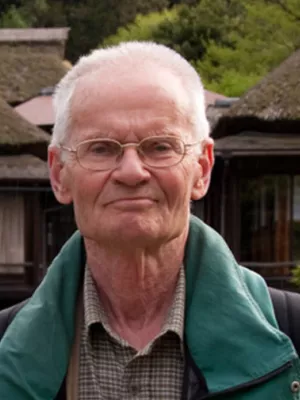
Björn Berglund
Professor emeritus

Holocene palaeoecology and shoreline displacement on the Biskopsmala Peninsula, southeastern Sweden
Author
Summary, in English
High-resolution palaeoecological proxies of pollen, macrofossils and diatoms from an isolation lake provide a long-term record of the Holocene landscape history and shoreline displacement on the Biskopsmala Peninsula in central Blekinge, SE Sweden. During the Preboreal/Boreal transition, the peninsula was sparsely vegetated by woodlands, along with lateglacial dwarf shrub/steppe communities. The lake basin was isolated from the shallow Yoldia Sea during this time. The regional climate improved from 10 700 cal. BP, evident as progressive expansion of Pinus -dominated mixed forest with deciduous trees. The lake basin was probably connected with the Ancylus Lake during the period 10 700-10 100 cal. BP. Subsequently the basin became isolated again, corresponding to the Early Littorina Sea phase. Replacement of freshwater diatoms by those with brackish-water affinity at 8100 cal. BP indicates the initial transgression of the Littorina Sea in this basin. But not until 7500 cal. BP were brackish conditions fully established. Peaks of brackish-marine diatoms and dinoflagellates during 7500-7000 cal. BP indicate increased saltwater inflow to the Baltic Sea in response to global meltwater pulse 3. However, interactive changes in seagrass and stonewort macrofossil concentrations suggest that three minor transgressions during 5900-5300, 5000-4700 and 4400-4000 cal. BP occurred locally, associated with centennial-scale variations in regional wind pattern or coastal storminess. By 3000 cal. BP, the lake basin was finally isolated from the Baltic, and thereafter the landscape on the peninsula became gradually more influenced by human activities.
Department/s
- Quaternary Sciences
Publishing year
2003
Language
English
Pages
578-589
Publication/Series
Boreas
Volume
32
Issue
4
Document type
Journal article
Publisher
John Wiley & Sons Inc.
Topic
- Geology
Status
Published
ISBN/ISSN/Other
- ISSN: 1502-3885

